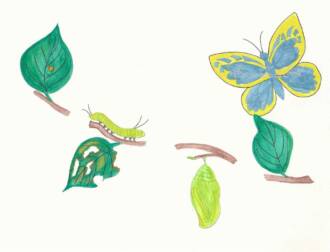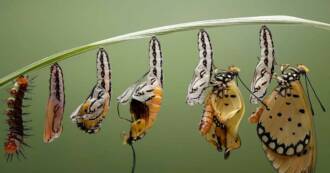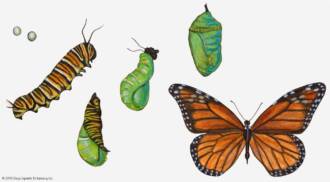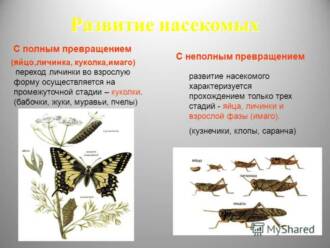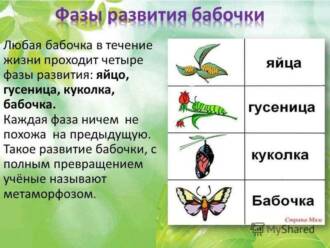
Butterflies are among the most beautiful creatures of nature. Their transformation is an amazing and complex process that has attracted the attention of scientists and nature lovers for centuries. Each stage of a butterfly's life has its own characteristics and secrets, which we are gradually unraveling.
The first stage is the egg. The butterfly lays eggs on plants that will serve as food for future caterpillars. The eggs have different shapes and sizes depending on the type of butterfly. They can be round, oval or cylindrical. The eggs can be single or collected in groups, but each of them contains all the information about the future butterfly.
The second stage is the caterpillar. The caterpillar hatches from the egg and becomes the main consumer of food. The caterpillar actively feeds on plants and grows very quickly. It has powerful chewing jaws that help it grind up food. The caterpillar can change its skin several times to grow and develop. This stage is called the larva.
The third stage is the pupa. After several molts, the caterpillar turns into a pupa. The pupa protects the caterpillar from the external environment and allows it to transform into an adult butterfly. Amazing changes occur inside the pupa - the caterpillar turns into a butterfly. In a few weeks, a complete transformation occurs, including changes in organs and tissues.
The fourth stage is the butterfly. And finally, the chrysalis splits open and the butterfly flies out. The butterfly emerges into the light and unfolds its wings. It is completely transformed and ready for a new life. An adult butterfly has wings with bright and colorful patterns that help it attract the attention of partners and scare away predators. The butterfly lives only a few weeks or months, depending on the species, and during this time it must find a partner and continue its species.
The transformation of a butterfly is a unique and mysterious process that continues to fascinate people with its beauty and complexity. Each stage of a butterfly’s life is part of this amazing journey that we can observe and study to learn more about the natural world.
Butterfly Transformation Secrets
1. Egg: the beginning of the life cycle

The secret of the butterfly's transformation is its amazing life cycle, which begins with an egg. The egg is the very first link in this amazing process. It is small, but all the genes and information for the development of the future butterfly are already hidden inside it.
2. Hungry caterpillars: active growth and development
When the egg hatches, a hungry caterpillar emerges from it. In this stage of the butterfly's life cycle, active growth and development takes place. The caterpillar constantly feeds in order to gain strength and energy for further transformation.
The secret to transforming a caterpillar into a butterfly is its ability to survive multiple molts while stretching its skin. When a caterpillar reaches a certain size, it stops growing and starts preparing for the next stage.
3. Chrysalis: transformation time
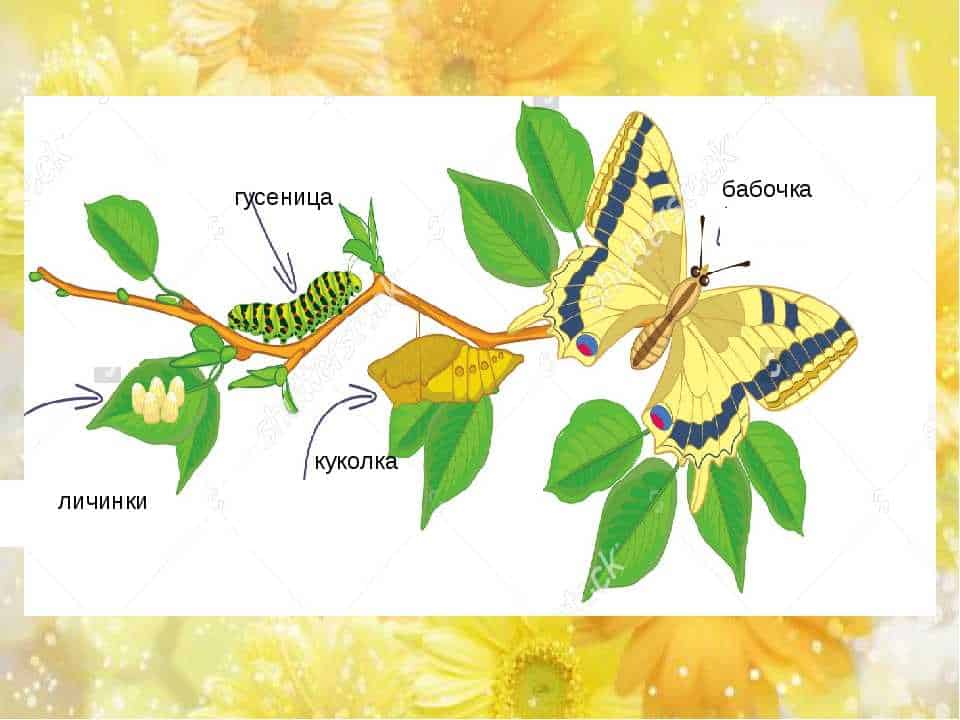
When the caterpillar is ready for transformation, it turns into a chrysalis. The most amazing changes occur during this stage of the butterfly's life cycle. Caterpillars close in their cocoons and begin to transform inside.
The secret to the transformation of a caterpillar into a chrysalis is the process of metamorphosis, during which there is a complete decomposition and restructuring of tissues. The chrysalis remains in this state for some time, until all the necessary changes take place inside.
4. Butterfly: awakening and flight
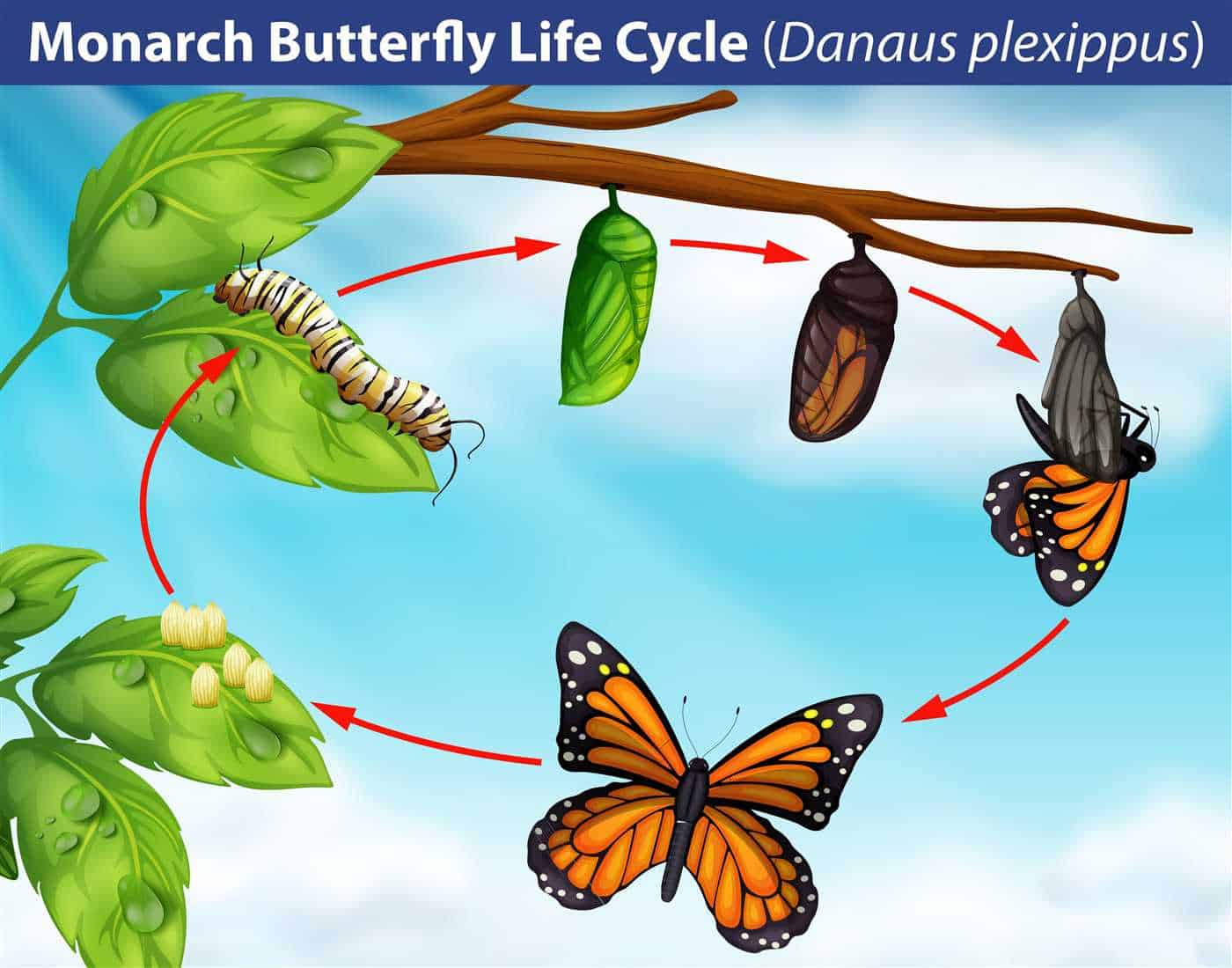
When the transformation inside the chrysalis is complete, a real miracle happens - the butterfly flies out of its cocoon. At this stage of the butterfly's life cycle, it awakens and is ready for its first flight.
The secret of transforming a chrysalis into a butterfly is its unsurpassed beauty and tenderness. The butterfly's wings open and it can fly in search of food and a breeding partner.
The transformation of the butterfly is a symbol of transformation and rebirth, which reminds us of the beauty and wonder of life.
Egg: the beginning of the life cycle
The egg is the first stage of the butterfly's life cycle. It is the starting point of transformation and symbolizes a new beginning. Butterfly eggs come in different shapes and sizes, depending on the species.
The eggs can be a variety of colors, from white to green or even red. Each egg contains an embryo that will develop inside. The eggs are usually placed on plants to provide nutrition and protection for the butterfly's future development.
Butterfly eggs can be laid singly or in groups. In some cases, the male and female may work together to find a suitable place to lay their eggs. This may be a plant leaf, stem, or other suitable surface.
Butterfly eggs are very small and usually have a unique texture or pattern on the surface. They can be smooth, rough, or have small protrusions. These features help the eggs stick to surfaces and protect them from pests and weather.
The egg is the first step in the amazing process of transformation from a wingless caterpillar to a beautiful and free butterfly. The egg begins a life cycle that will go through several stages, leading to a complete transformation and the birth of a new creature.
Caterpillar: the first stage of metamorphosis
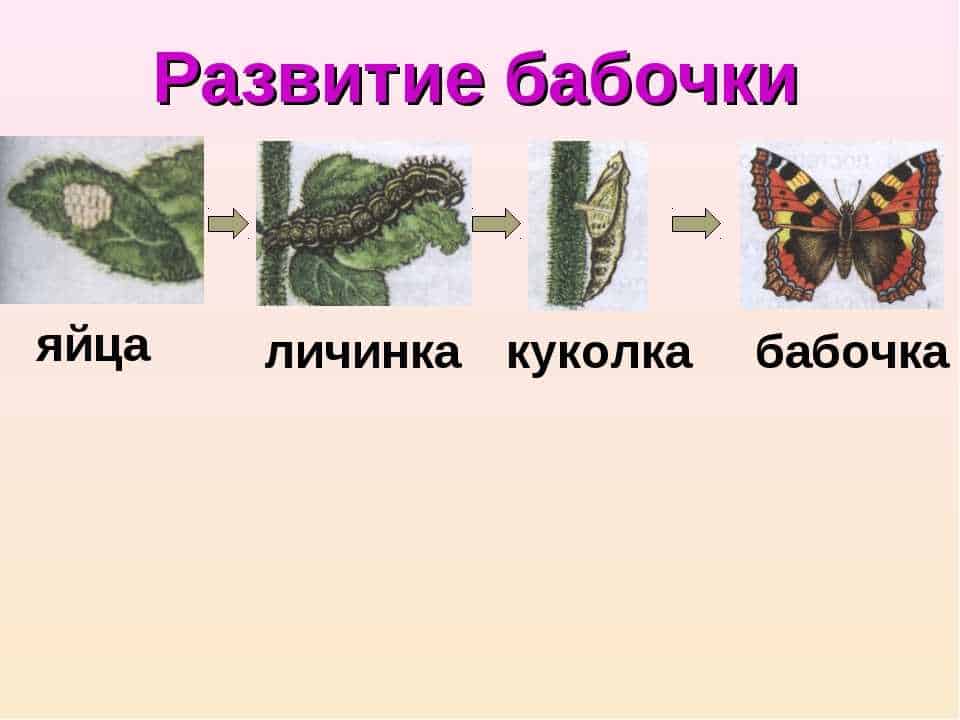
The caterpillar is the first stage of butterfly metamorphosis. She hatches from an egg and begins her journey of transformation.
The caterpillar has amazing abilities. She actively eats to gain enough nutrients for her growth and development.
The caterpillar also has special organs called caterpillar legs that help it move on the surface and eat food. In addition, she has mandibles, which are used to chew food.
During this stage, the caterpillar goes through several molts as it sheds its old skin and grows a new one. This process helps her grow and develop.
The caterpillar is also well camouflaged to avoid danger. It comes in a variety of colors and patterns that help it blend in with its surroundings and protect it from predators.
Caterpillar: foraging and growth
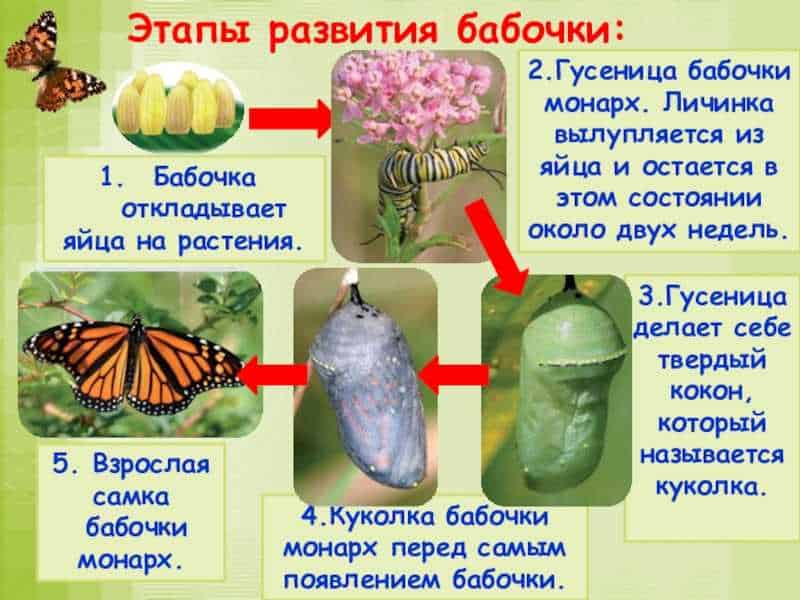
The caterpillar is the first stage of the butterfly's life cycle. It is a larva and remains in this stage for most of its life. The caterpillar actively searches for food and grows to reach its maximum adult form.
Caterpillars have witty senses and the ability to detect their food. They can use their visual and olfactory apparatus to find suitable plants for food. When a caterpillar detects a plant, it begins to feed actively, eating the leaves and other parts of the plant.
Nutrition is the main factor influencing caterpillar growth. During this stage, they are constantly growing and increasing in size. Caterpillars can eat huge amounts of food, sometimes weighing several times their own weight.
To ensure their growth and development, caterpillars must constantly seek and consume food. They can move from one plant to another to find a new source of food if the current plant dries out. It is important to note that caterpillars select plants that contain the necessary nutrients for their growth and development.
As a result of searching for food and active feeding, caterpillars grow very quickly. They go through a series of molts in which they shed their old skin and replace it with a new one. Each molt is accompanied by an increase in the size of the caterpillar. This process is repeated several times until the caterpillar reaches its final size.
Chrysalis: preparing for transformation
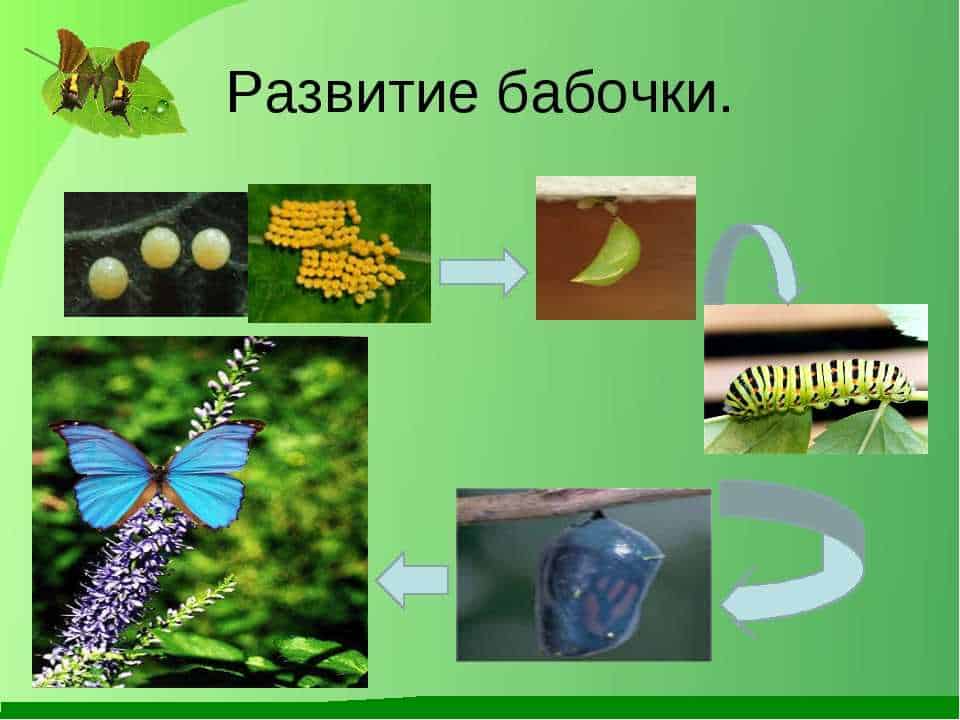
During the pupal stage, a butterfly undergoes important changes that prepare it for its transformation into an adult. During this period, the butterfly is in its cocoon, where multiple transformations of its body take place.
Inside the cocoon, the pupa goes through a process of metamorphosis, which is carried out thanks to special cells called imaginal discs. These cells contain all the information about the future shape and structure of the butterfly.
Inside the cocoon, the chrysalis is completely transformed. Her body decomposes into a liquid mass, from which new organs and tissues are then formed. During this period, the wings, head and legs grow, as well as the formation of new digestive and respiratory organs.
An important part of this process is the formation of wings. Inside the cocoon, the chrysalis creates special structures known as porches. The winglets contain cells that then develop into butterfly wings.
The whole process of preparing for the transformation takes a certain time, which may be different for different types of butterflies. At the end of this stage, the chrysalis is ready to emerge from the cocoon to become a beautiful and flying butterfly.
Pupa: internal changes
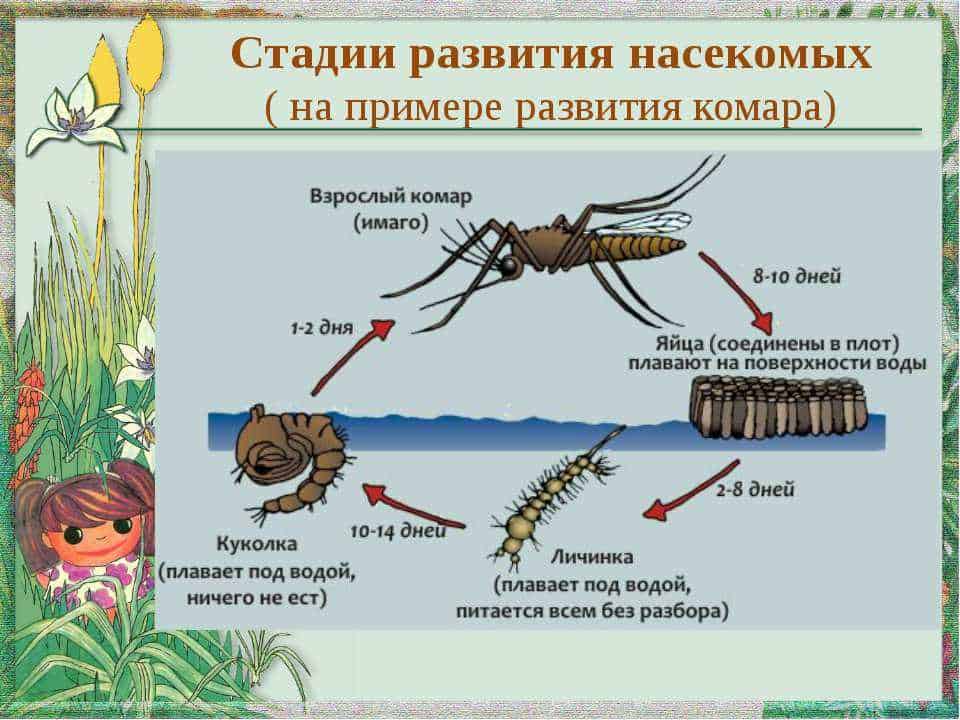
During the pupa stage, significant internal changes occur that prepare the butterfly for its future life. The internal organs of the pupa undergo a series of transformations in order to become adapted to the new conditions of existence.
One of the main changes that occurs in the pupa is the transformation of sponges into salivary glands. These glands play an important role in the nutrition of the butterfly, as they help it absorb food and obtain the necessary nutrients.
In addition, the development and formation of the nervous system takes place in the pupa. Nerve cells and connections between them begin to develop to provide the butterfly with the ability to move and interact with the environment.
An important stage of internal changes in the pupa is the development of wings. At first, they are small tubercles, but gradually turn into full-fledged wings that can provide the butterfly with flight and movement.
Internal changes in the pupa occur gradually and require a certain amount of time to complete. This stage of the butterfly's life is critical, as it is here that important transformations take place that allow it to leave the chrysalis and begin a new life.
Pupa: butterfly formation

When the caterpillar reaches a certain stage of its development, it begins the process of becoming a chrysalis. This stage is one of the most important and amazing in the life of a butterfly.
The pupa is a special shell created by the caterpillar from its own body. Inside this shell, amazing transformations occur that lead to the formation of a butterfly.
Butterfly formation
Inside the chrysalis, the caterpillar undergoes radical changes. Its body decomposes and rebuilds itself to create a new structure: the body of a butterfly. In this process, the caterpillar's genes are so intricately and precisely controlled that it can even create new organs that it did not have before.
Most of the butterfly's body is formed from undigested food that was accumulated in the body of the caterpillar before transformation. Inside the pupa, this food is processed, and it becomes the building material for a new organism.
As the butterfly develops, there are also changes in the nervous system that allow it to fly and find food. When all the changes are completed, the chrysalis splits, and an adult butterfly flies out of it, ready for a new life.
Insect: exit from the chrysalis
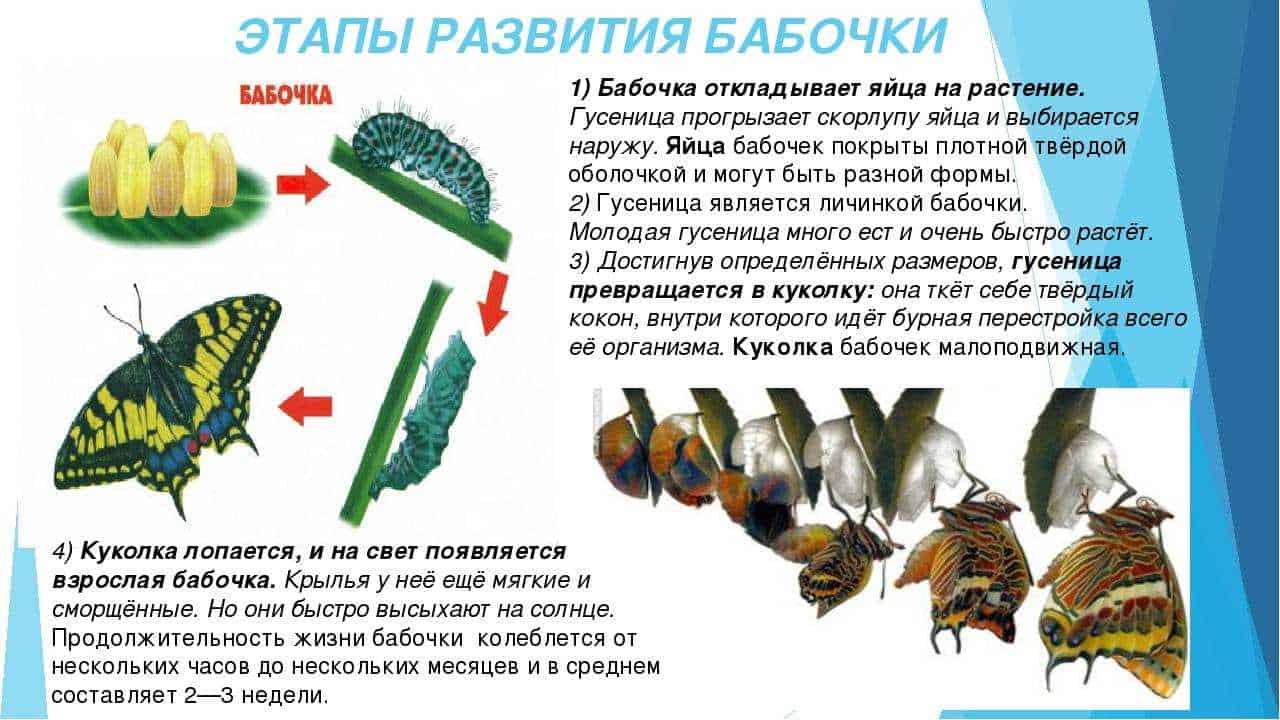
After a long period of being in the chrysalis, the insect is ready to emerge into the light. When the time comes, it begins to pave the way to the exit. With special mandibles, it punches a hole in the chrysalis, through which it will exit. This process is called eclosion.
When the hole is pierced, the insect begins to push its body out of the pupa. It uses its legs and mandibles to widen the hole as much as possible and crawl through it. This is a very time consuming process and the insect must be very careful not to damage its delicate body.
After the insect has emerged from the chrysalis, it remains on the chrysalis for some time to clear its wings and straighten its body. It then begins its new journey as an adult butterfly, exploring its environment and looking for food.
Coming out of the chrysalis is a very important stage in the life of an insect. It symbolizes the end of the transformation period and the beginning of a new life. Every insect must go through this process to become a full-fledged butterfly and continue its life cycle.
Butterfly: unfolding wings
Wing unfolding is one of the most important stages in a butterfly's life. After going through the metamorphosis from caterpillar to chrysalis, the butterfly is inside the chrysalis, preparing to emerge into the light.
When the time comes, the chrysalis begins to shake and the butterfly begins to break out of its protective shell. The butterfly's wings are folded and crumpled inside the chrysalis, but they unfold quickly when the butterfly emerges.
The unfolding of the wings is due to the circulatory system of the butterfly. She begins to pump blood into her wings, which helps them turn around and return to their normal position. When the wings are fully extended, the butterfly can begin to use them for flight.
This process of unfolding the wings is very important for the butterfly, as they are its main means of transportation and self-defense. The unfolding of the wings helps the butterfly to be ready for a new life and begin to explore the world around him.
Butterfly: first flight
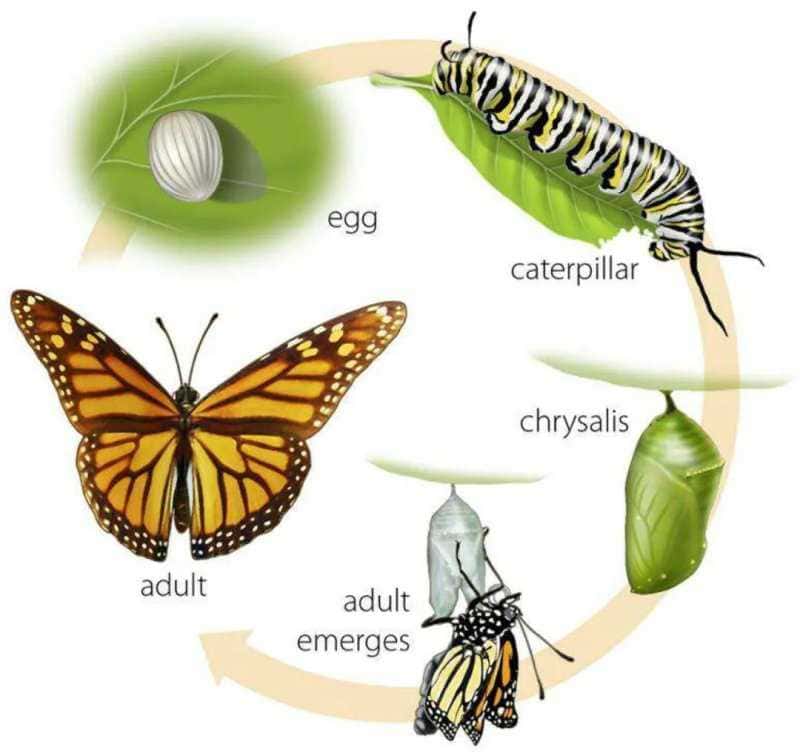
A butterfly's first flight is one of the most important moments in its life. After a long time in the chrysalis, the butterfly is finally ready to emerge into the light and explore the world around it.
When a butterfly first hatches from a chrysalis, it is still very weak and cannot fly. Her wings are soft and foldable, and she has to wait for them to dry and harden. Therefore, she is safe at her hatching site and waits until her wings are ready to fly.
When the butterfly's wings are finally strong, it unfolds them and begins to slowly flap them. These are the first attempts to fly. The butterfly may be unsure of its movements and make short jumps or fall to the ground. But she does not despair and continues to try to fly.
Gradually, with each new flight, the butterfly becomes stronger and more agile. She learns to control her movements and maneuver in the air. Her wings become stiffer and stronger, allowing her to fly farther and higher.
The butterfly's first flight is not only a physical achievement, but also a symbol of its transformation. It has come a long way from egg to chrysalis, and now it can fully enjoy the freedom of flight and the beauty of the world around it.
Butterfly: mate attraction and reproduction

An adult butterfly, after leaving the chrysalis, seeks to attract the attention of a breeding partner. To do this, she uses various techniques, including a special way of moving and the color scheme of her wings.
A special way to move. A butterfly can soar in the air, swimming slowly and beautifully on its wings. This attracts the attention of other butterflies and helps it find a breeding partner. While hovering, the butterfly can also perform complex maneuvers and show its strength and agility.
Wing colors. Butterfly wings come in a variety of colors and patterns that help them attract a mate. They can be bright and saturated, or have special camouflage patterns. Some species of butterflies have special color spots or stripes that attract mates and indicate they are ready to breed.
Pheromones and sounds. Butterflies can also use scent and sounds to attract a mate. They secrete pheromones that can be heard or felt by other butterflies at a considerable distance. Each species of butterfly has its own unique scent which helps them attract a mate of the same species.
Reproduction. After attracting a breeding partner, butterflies perform a special dance in the air. They soar together, perform complex movements and intertwine their bodies. The female then lays her eggs on plants that will serve as food for future caterpillars. Eggs can be placed as a group or separately, depending on the type of butterfly.
Thus, attracting a mate and reproduction are important stages in the butterfly's life cycle. They use their unique beauty and abilities to attract attention and find a suitable partner for reproduction and continuation of their species.


